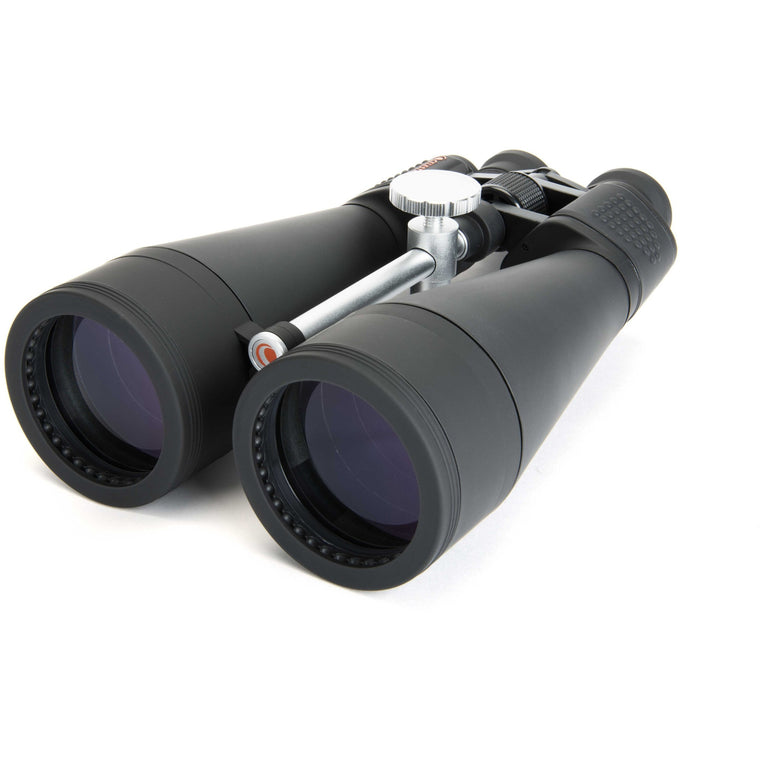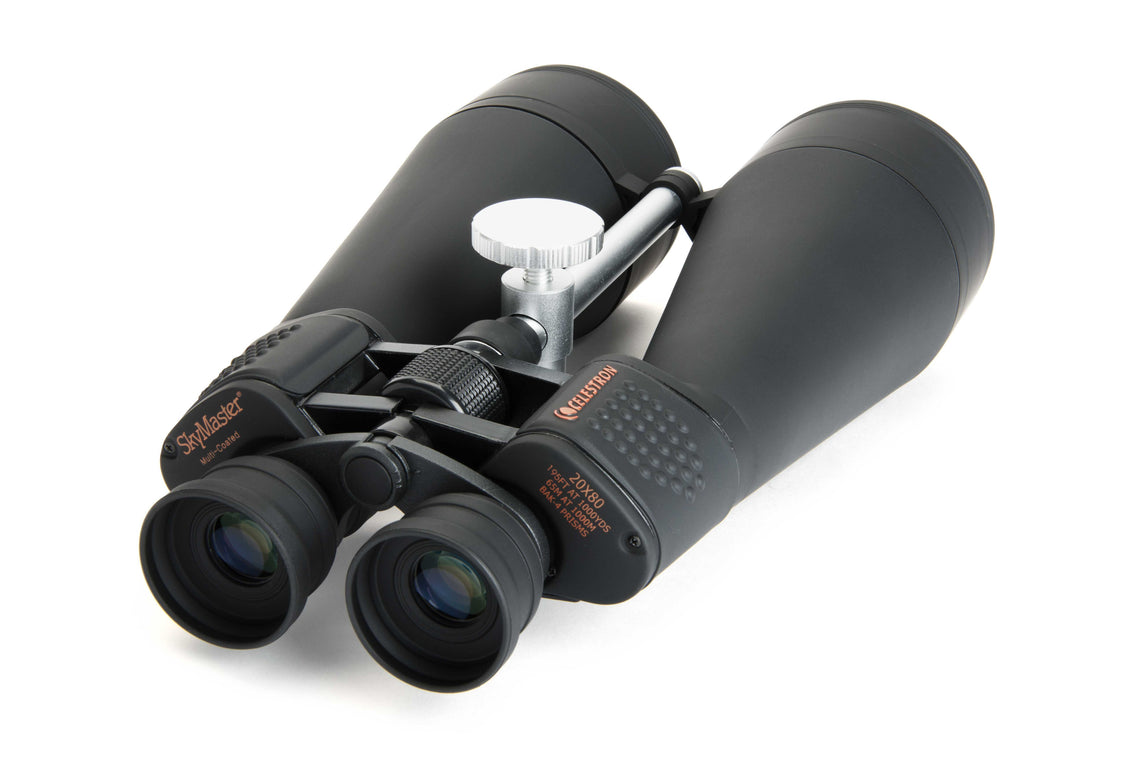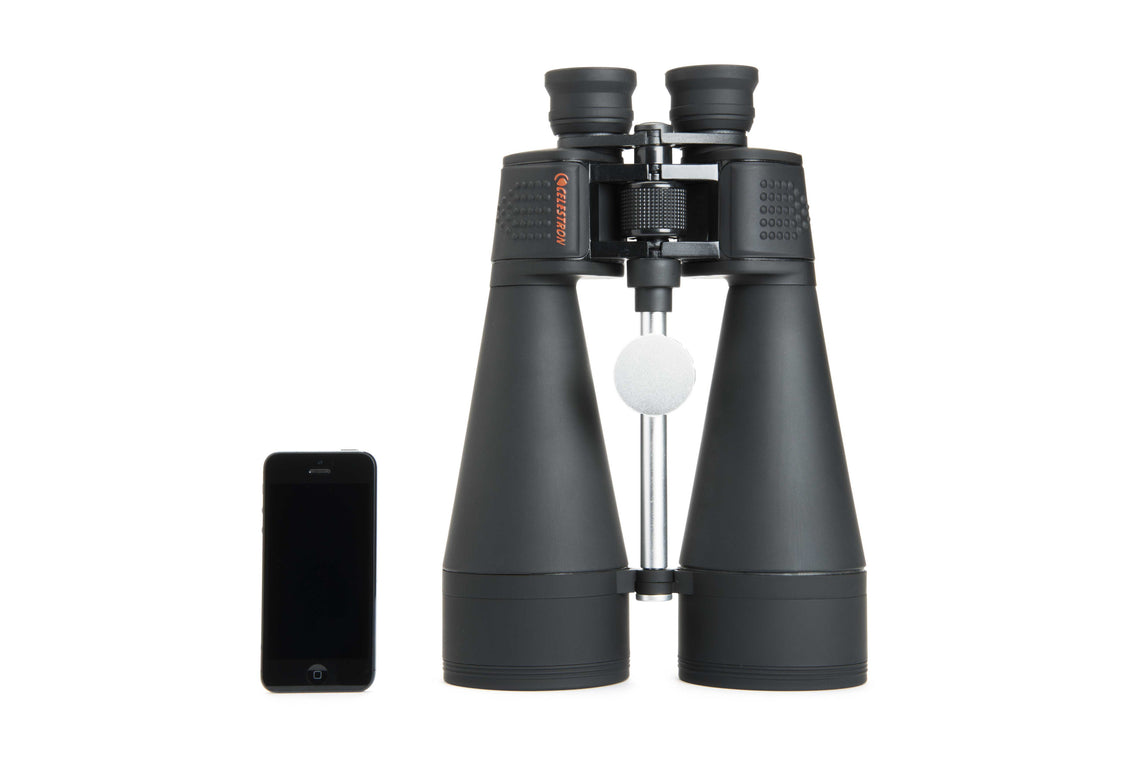Product Description
Celestron 20X80 Skymaster Porro Prism Binoculars
- 20x magnification porro prism binocular
- Giant 80 mm objective lens offers maximum image brightness in low-light and long-range conditions
- Ultra sharp focus across the field of view
- Multi-Coated optics for sharp, clear views
- Suitable for terrestrial or astronomical viewing
- Protective rubber covering for ultra-firm grip
- Large center focus knob for easy focusing
- Integrated tripod adapter rod for ultra-stable tripod mounting
- Long eye relief ideal for eyeglass wearers
- Soft carrying case included for travel and safe storage
- Limited Lifetime Warranty provides best protection and product support on the market
Celestron’s SkyMaster Series of large aperture binoculars are a phenomenal value for high performance binoculars ideal for astronomical viewing or for terrestrial (land) use - especially over long distances. Each SkyMaster model features high quality BaK-4 prisms and multi-coated optics for enhanced contrast. Celestron has designed and engineered the larger SkyMaster models to meet the special demands of extended astronomical or terrestrial viewing sessions.

| Magnification: | 20x |
| Objective Lens Diameter: | 80mm (3.15") |
| Focal Length of Objective Lens: | TBD |
| Angular Field of View: | 3.4° |
| Linear Field of View (@1000 yds) / @1000 m): | 178 ft (59 m) |
| Exit Pupil: | 4.0mm (.16") |
| Eye Relief: | 15.4mm (.61") |
| Close Focus: | 98.4 ft (30 m) |
| Interpupillary Distance (max): | 72mm (2.83") |
| Interpupillary Distance (min): | 56mm (2.20") |
| Diopter Adjustment Range: | ±3 |
| Twilight Factor | 40 |
| Relative Brightness: | 16 |
| Limiting Stellar Magnitude: | Ideal: 12.02 | Moderate: 11.02 | Poor: 10.02 |
| Lens Coatings: | Fully Multi-Coated - XLT Coatings |
| Prism Glass (Type): | BaK-4 |
| Prism Coatings: | N/A |
| Weight: | 123.2 oz (3,492g) |
| Environmental Protection: | Waterproof (IPX7) |
| Nitrogen Filled: | Yes |
| Tripod Adaptable: | Yes |
| Carrying Case: | Deluxe Nylon |
| Dimensions: | 335mm x 230mm x 94mm (13.2" x 9.1" x 3.7") |
| Included Items: | Binoculars Objective lens caps Eyepiece Covers Rainguard Neck strap Lens cloth Non-Silica Dessicant Case Instruction manual |
Payment & Security
Your payment information is processed securely. We do not store credit card details nor have access to your credit card information.



















